 |
 |
 |
| |
Projected Health and Economic Impact of Hepatitis C on the United States Medicare System From 2010 to 2024
|
| |
| |
Reported by Jules Levin
AASLD 2014 Nov 7-11 Boston
David Rein et al
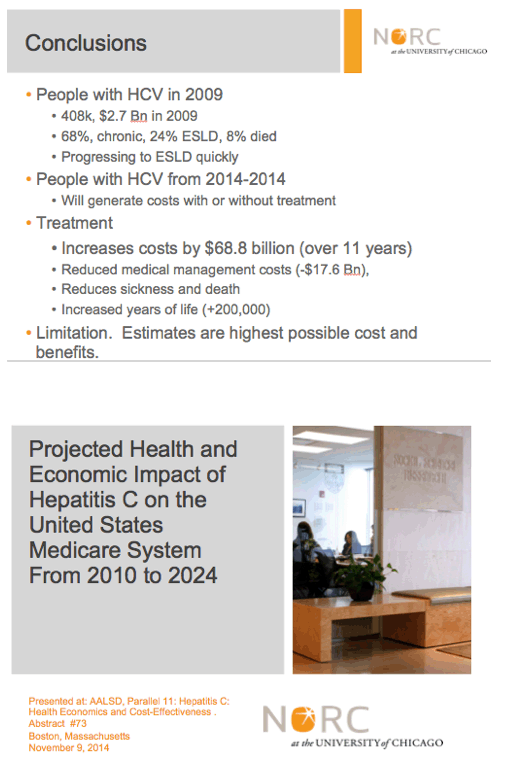
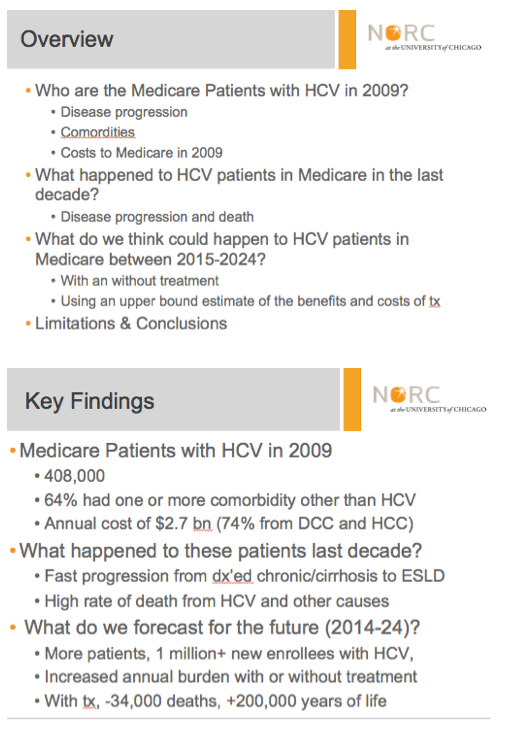
ABSTRACT BODY:
Over a million Americans with hepatitis C virus (HCV) will age into Medicare by 2024. Information on the clinical and economic burden of HCV in Medicare is limited. We used primary data to estimate the clinical burden of HCV in Medicare in 2009 and forecast this burden until 2024 assuming 3 treatment strategies. Our Medicare administrative claims data contained 122,417 patient years of diagnosed HCV across the years 2002-2009. Using ICD-9-CM codes, we divided HCV patients into 6 stages; chronic HCV, cirrhosis, decompensated cirrhosis (DCC), hepatocellular carcinoma, transplant/post-transplant, and death occurring in a year with diagnosed HCV. We estimated incremental annual costs of each stage using a two-part health expenditure. We weighted the data to estimate the Medicare population in each HCV stage as of 2009 and estimated new cases of HCV entering Medicare from 2010-2024 using NHANES. We used a simulation to forecast future HCV health outcomes in Medicare, assuming no treatment (NT), treatment with pegylated interferon, ribavirin, and a protease inhibitor (PRPI), and an all-oral high efficacy regimen (AO). We estimated 796,232 patients with HCV in Medicare in 2009, of whom 63.1% had chronic infection only, 9.9% had cirrhosis, 14.7% had DCC, 2.5% had HCC, 2.6% transplant or post-transplant maintenance, and 7.2% died during 2009.
We estimated that between 2010 and 2024, an additional 1,027,066 individuals with chronic HCV would enter the Medicare system. Of the cumulative 1,823,298 individuals with chronic HCV currently in or entering Medicare from 2010-2024, with NT we forecast that 661,060 (36.2%) would die from HCV or other causes while in a diagnosed state of DCC, HCC, or transplant/post-transplant. Treatment with PRPI reduced deaths in these states by these states by 29,720, and increased undiscounted QALYs by 1,562,119. Treatment with AO reduced deaths in these states by 126,163 and increased undiscounted QALYs by 7,692,906. The incremental costs of non-antiviral HCV treatment were higher in chronic HCV and cirrhosis than values used in prior cost-effectiveness models while costs for advanced stages were similar. Medicare contained more diagnoses for advanced disease in 2009 Medicare population than predicted by previous simulation. Treatment, especially treatment with interferon free, all oral regimens could substantially reduce morbidity and mortality from HCV within Medicare. Because of the large proportion of Medicare patients that enter the program in advanced stages of disease, treatment prior to Medicare entry is likely to be more effective in mitigating the health consequences of HCV.
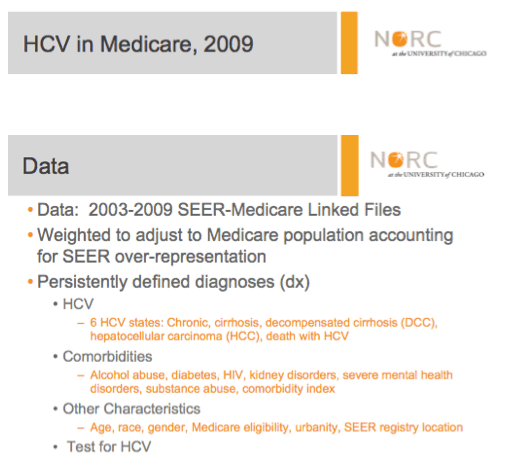
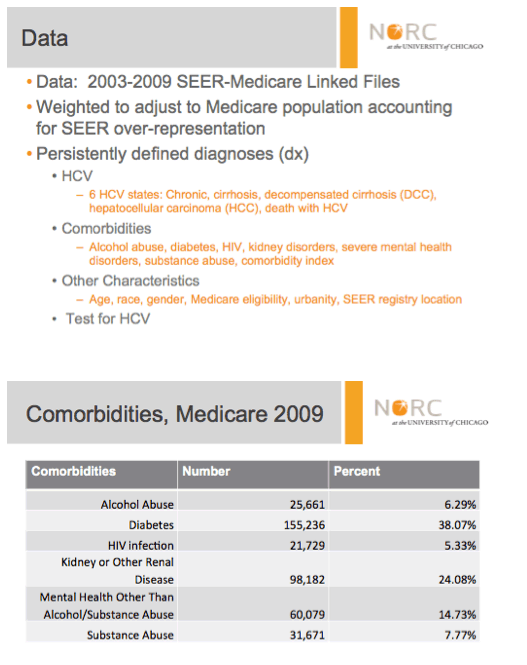
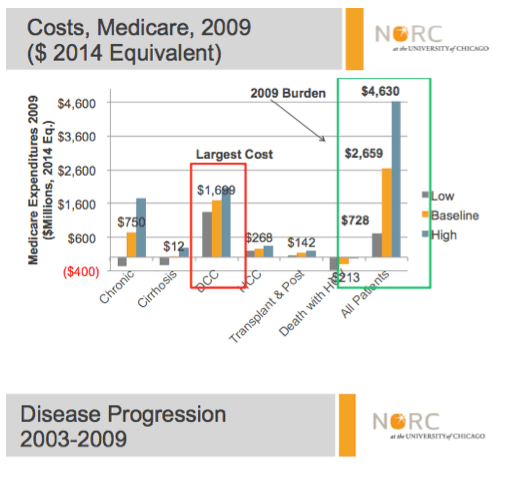
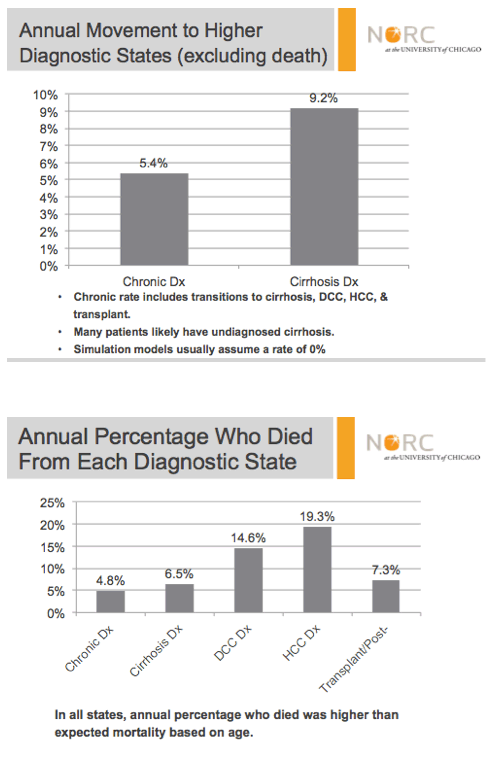
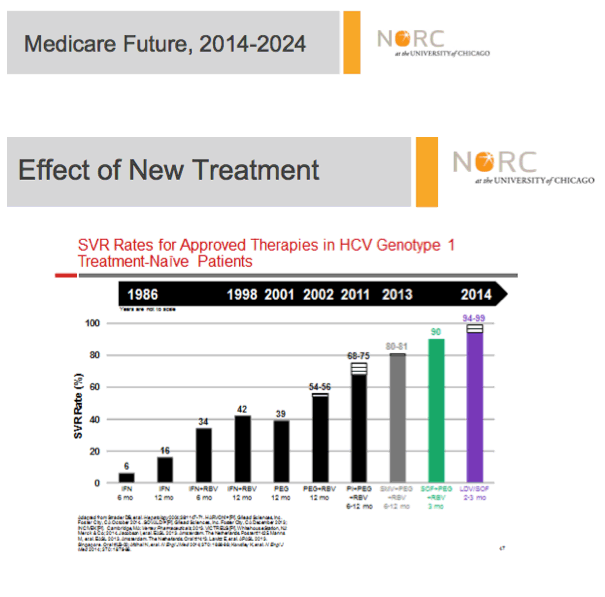
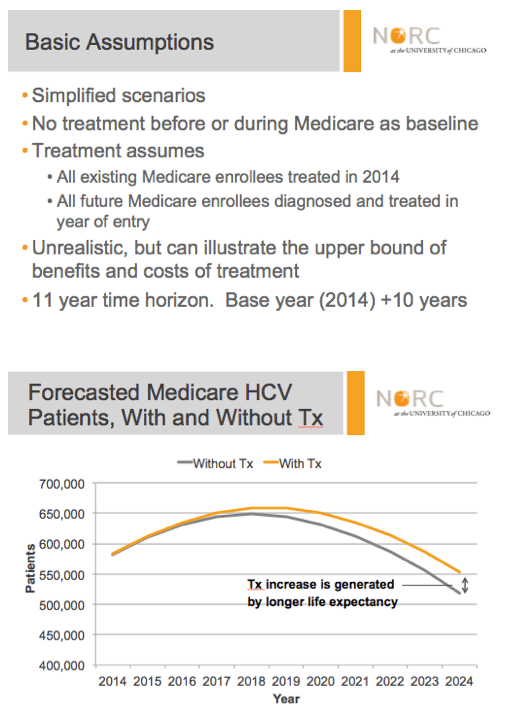
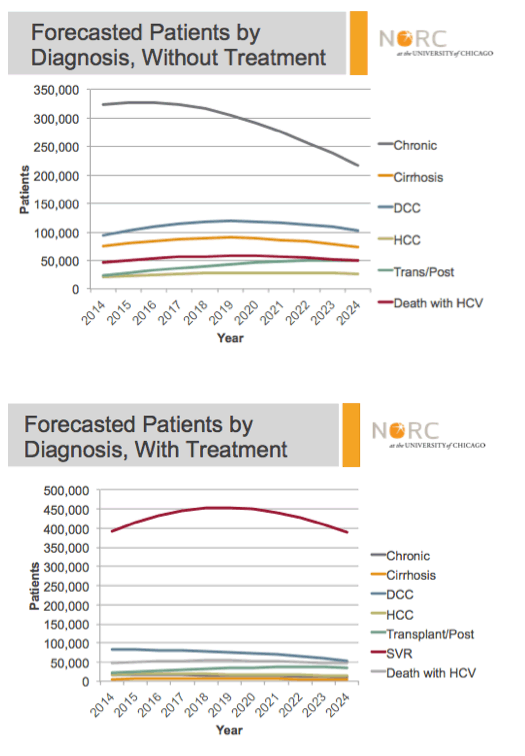

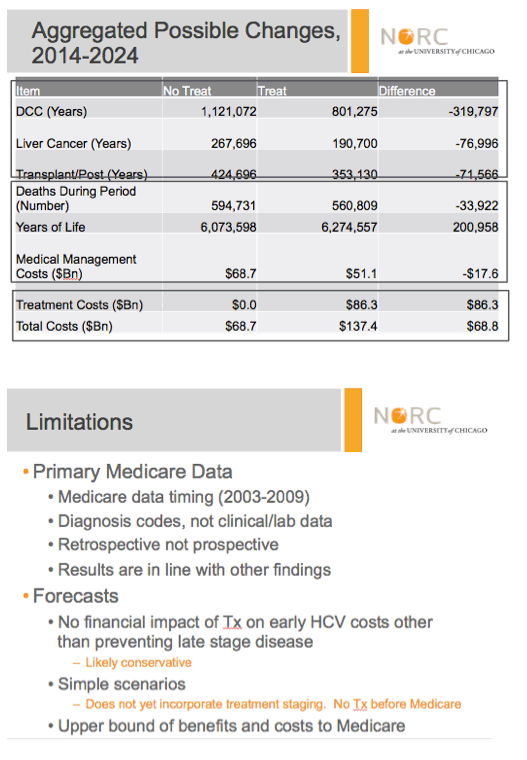
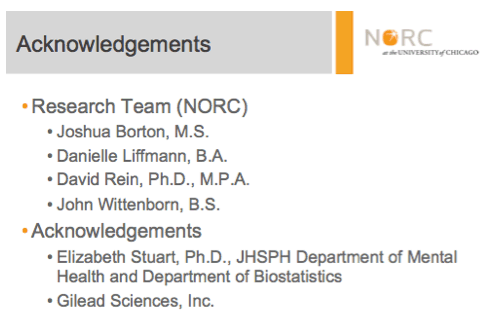
|
| |
|
 |
 |
|
|